Pantex employee photos, 1980s
Team photographs at a nuclear weapons factory offer a glimpse into the mundanity and materiality of the bomb
Most of our attention on the people who create weapons of mass destruction tends to focus on the charismatic, usually-male, scientists who are associated with the role of “inventor.” Once the weapons are invented, our attention moves away from the people who make them and either towards the weapons themselves, as objects of a dark technophilia, or to the soldiers who wield them or the politicians who order their use.
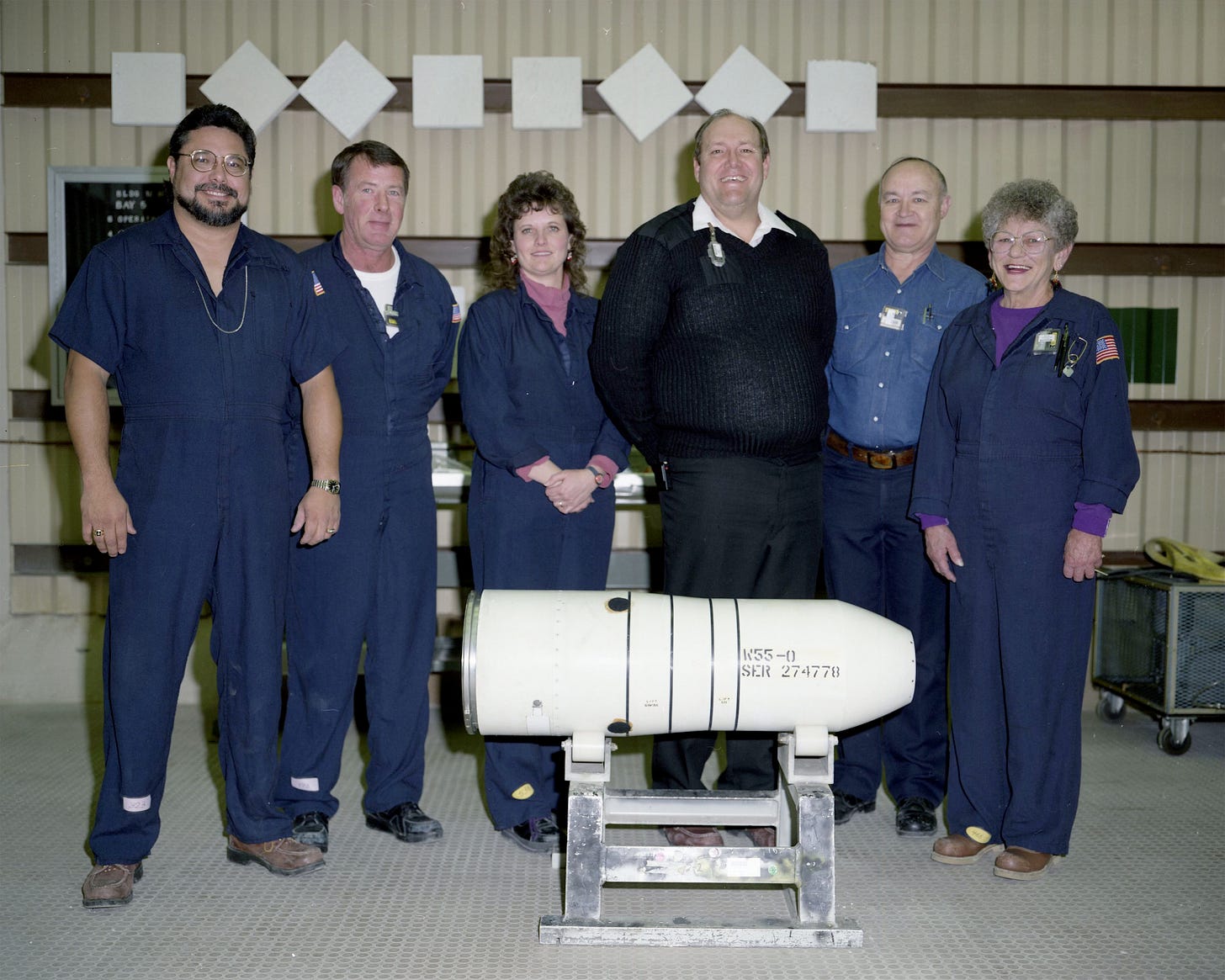
But the act of making an arsenal, once the “inventing” is done, is a lot of work by itself. The exponential curve in the US nuclear weapons stockpile over the course of the 1950s and early 1960s wasn’t the product of clever nuclear physicists, it was the product of industrial manufacturing. The US built literal factories for producing nuclear weapons and their components, spreading across the country. We often speak with awe at the size of the Manhattan Project, but it was only a fraction of the size of the Cold War nuclear infrastructure built in the 1950s.
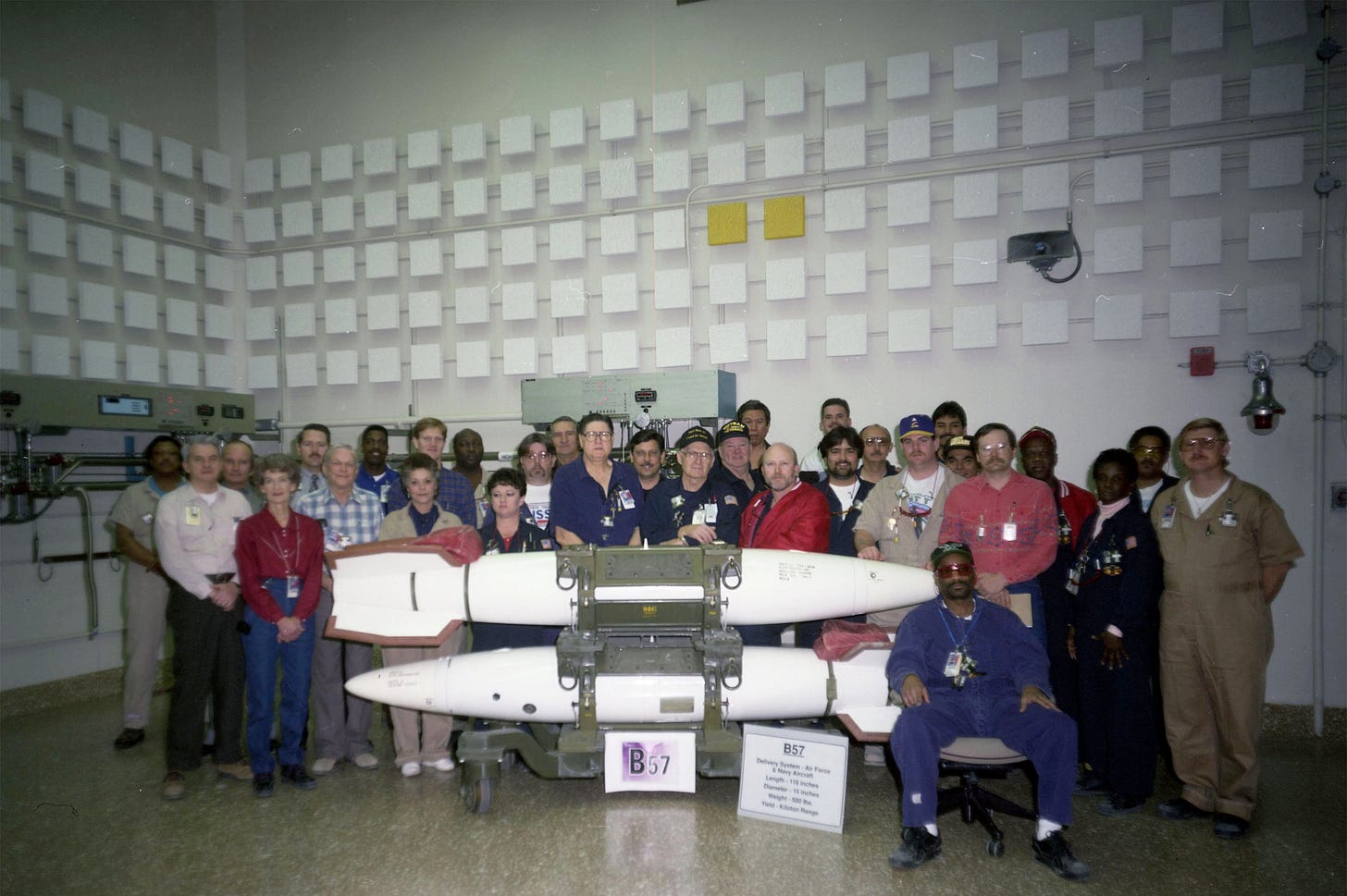
One of these factories was the Pantex Plant, near Amarillo, Texas. Pantex was the hub of a vast nuclear infrastructure, the place where all of the pieces came together and the actual weapons were assembled. It was also where the weapons would be disassembled, when their time in the stockpile had come to an end. Depending on the weapon, this could be difficult work, as many later weapons, especially compact tactical nuclear weapons, were optimized for their mission, not for ease of disassembly.
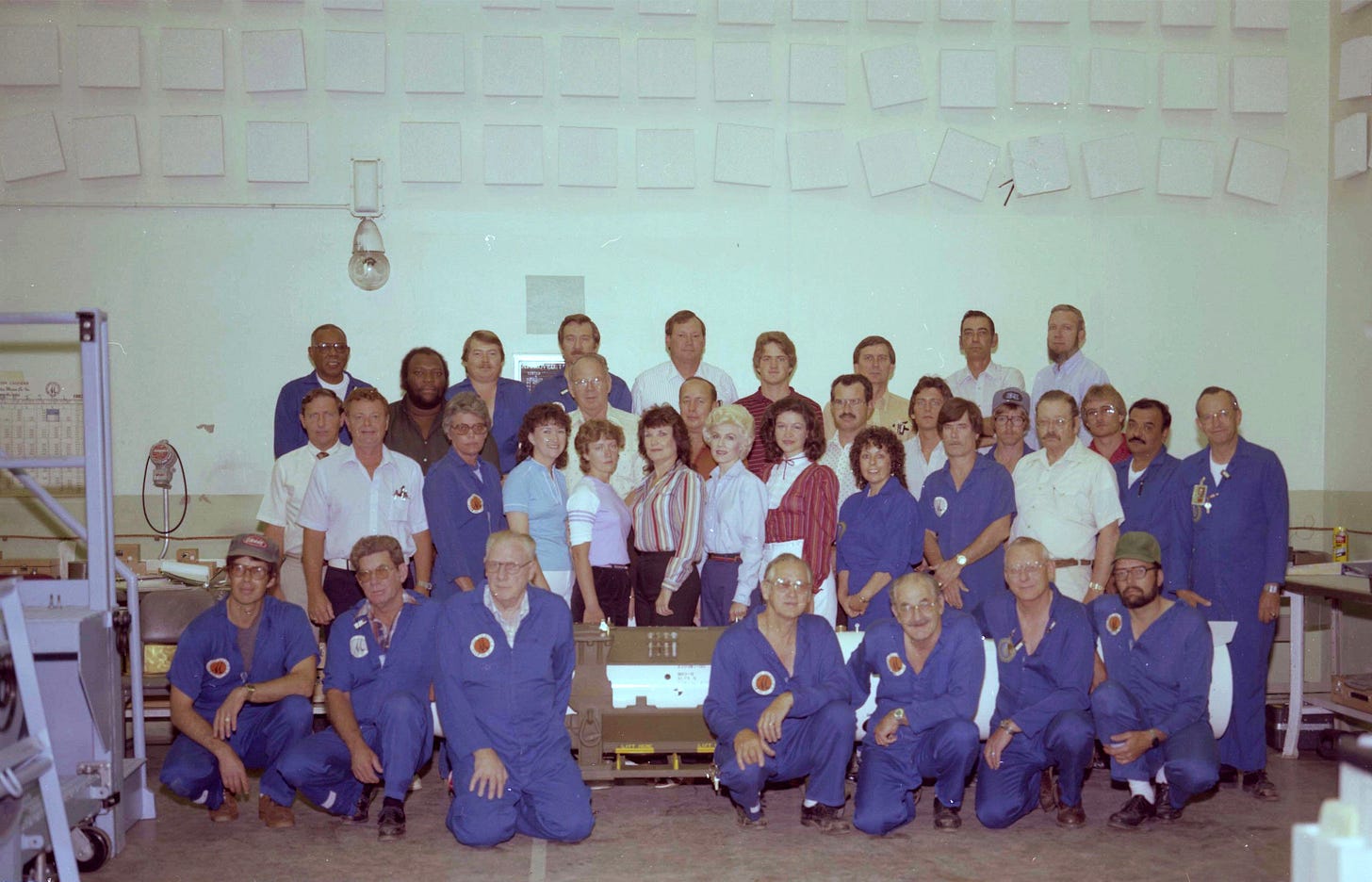
Judging from the copious number of these photographs, it appears that there was a tradition at Pantex for various assembly/disassembly crews to take group photographs with their bombs. They are the height of mundanity, on the whole: normal looking people at work. But, because its Pantex, they are posed around their nuclear weapons. It’s as American as apple pie, in a way.
These photographs fascinate me. Most of them are from the 1980s, and the clothing, the hair, the dispositions — they all feel of the era. Each one has a somewhat different type of gender relationship being presented. The spaces they are in are themselves curious as well — the odd squares on the walls of the cavernous assembly/disassembly rooms.
If you removed the nukes, the photos would be pretty mundane. People at their job. And it was, in a way, just a job. I gave a talk at Sandia National Laboratories a few weeks ago and was struck by the mundanity of the lab space. At one point we passed by the building where the graphic designers worked — graphics designers with Q Clearances, so they could make classified brochures and Powerpoint presentations.
Most of the above photos come from a “history” page that Pantex has put online, celebrating its safety, its “women in the workforce,” and its “infrastructure for innovation.”1 And it’s, of course, easy to be cynical about such a thing. But there’s something to the fact that this kind of blue-collar work does seem to have had a more diverse workforce than the more high-profile weapons work. It’s literally blue-collar work, the kind that doesn’t get movies made about it, except when something goes terribly wrong.
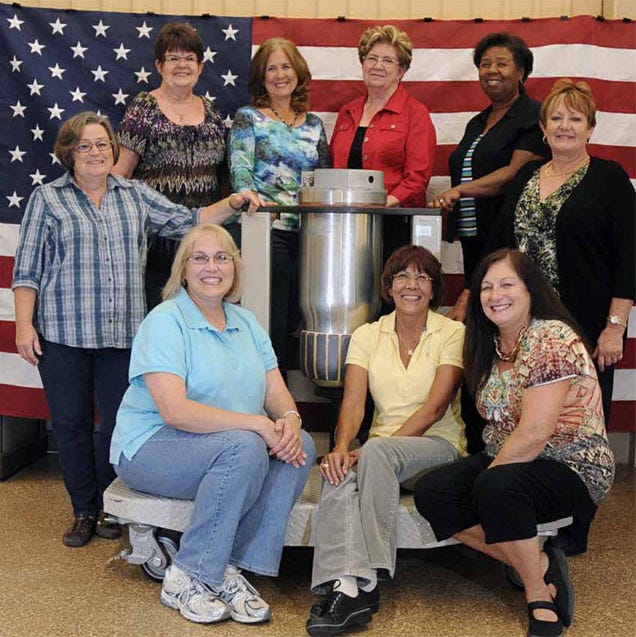
There’s something funny whenever you treat nuclear weapons as anything other than symbols of mass destruction. The weapons are among the most potent symbols for destructive power that one can conceive of outside of fiction, but they’re also mundane technical objects, created and maintained and disassembled by human hands.
My students are often quite curious about how you take apart nuclear weapons. They assume, I think, that nuclear weapons are volatile — like you are taking apart a ticking time bomb. And there are sometimes tetchy aspects to it, like having to crack high explosives that are glued to a plutonium pit. I’ve taken to having a small discussion of it when I teach my courses on the history of nuclear weapons, on the mundanity of disassembly, because I think it highlights that important physicality of the weapons. They’re just things. Made by people. Made, it turns out, by quite ordinary people. The act of making nuclear weapons is, in some ways, just a job. But so also, it follows, would be the act of un-making them.
I have modified many of the photographs for aesthetic purposes: cropping and, in some more extreme cases, using “content aware fill” methods to remove the large numeric labels that were present on almost all of them. All of these changes are to things on the periphery of the original photograph. The image of the “80s ladies” comes from Pantexan (Winter 2013).


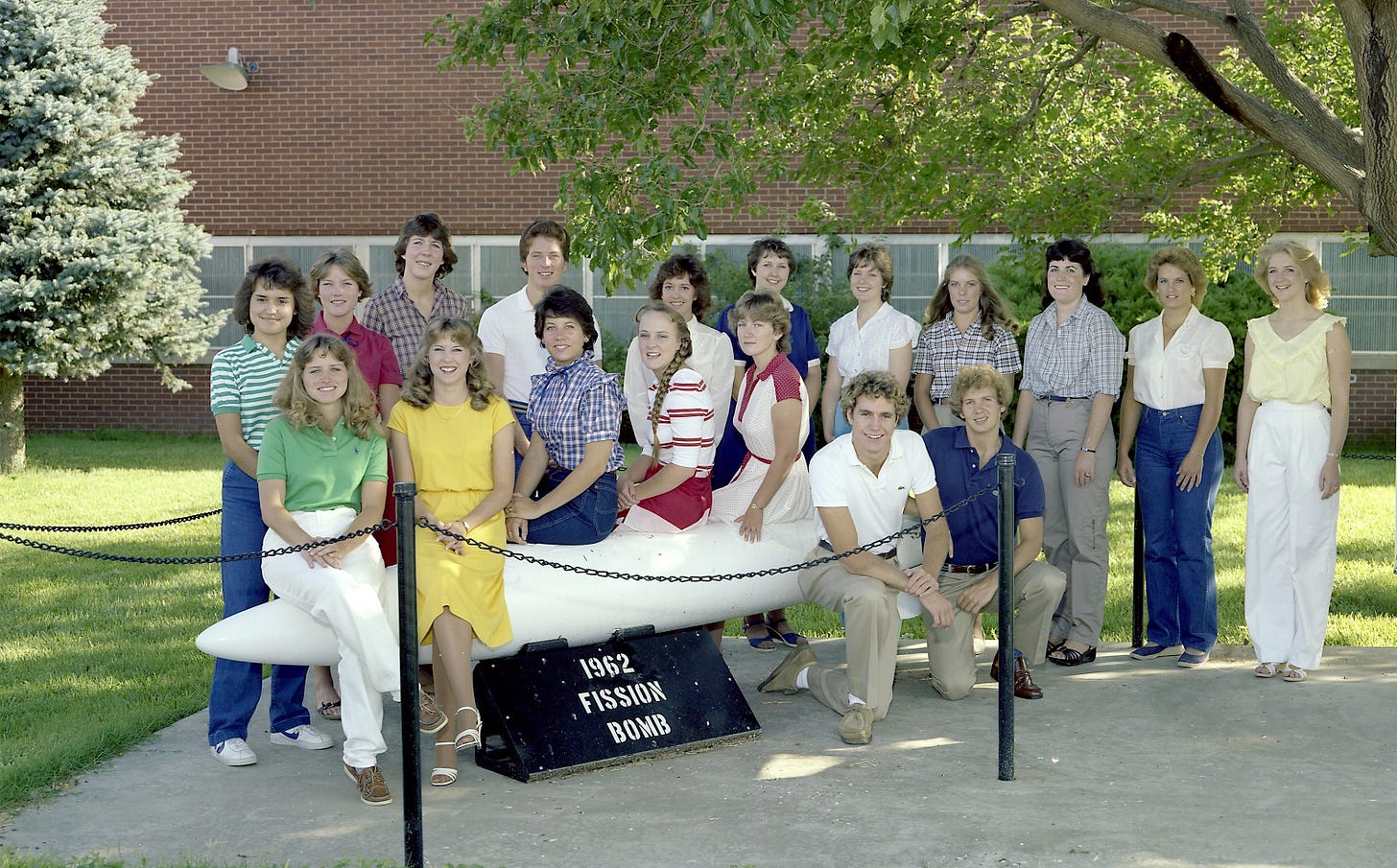
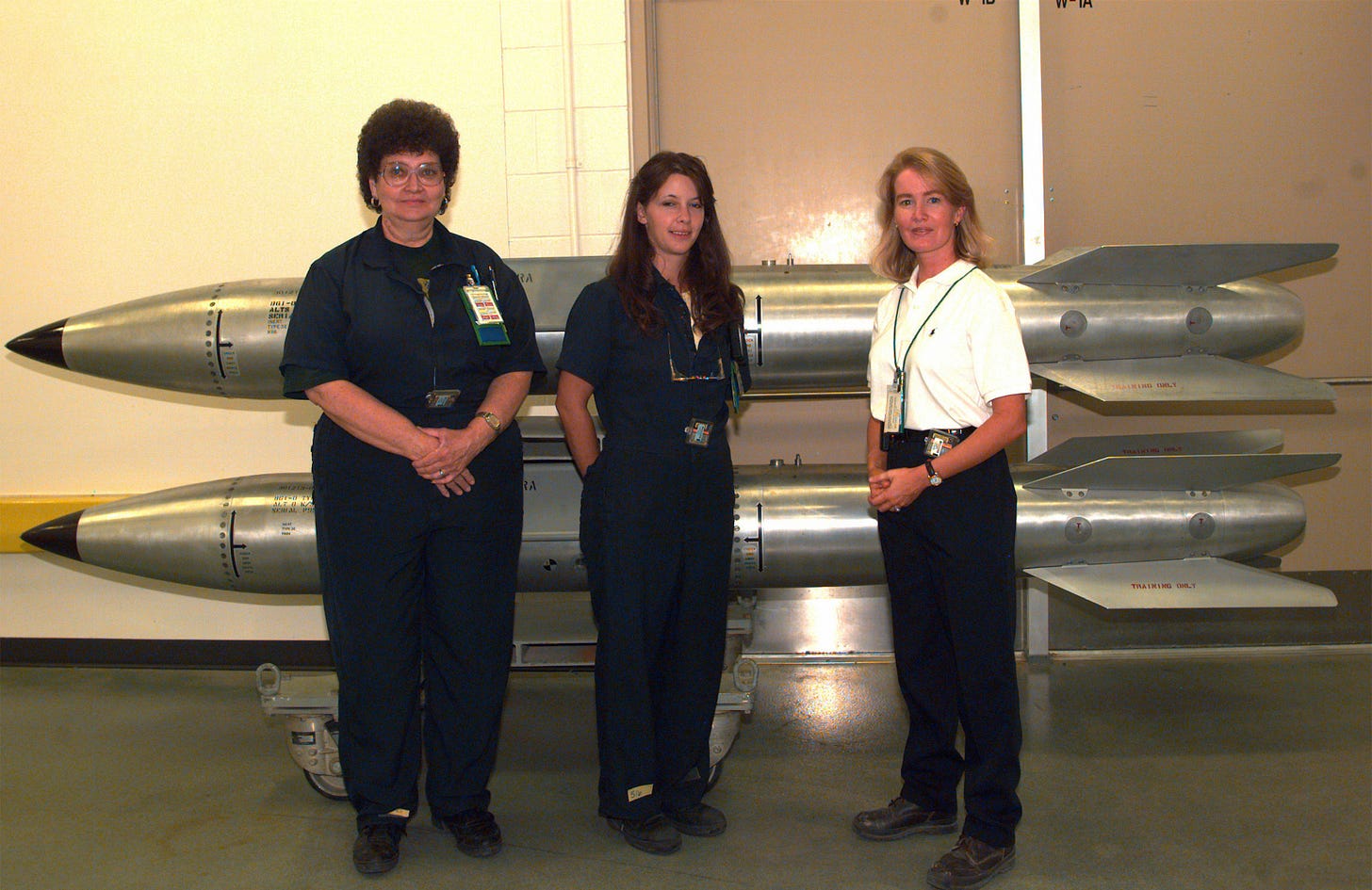
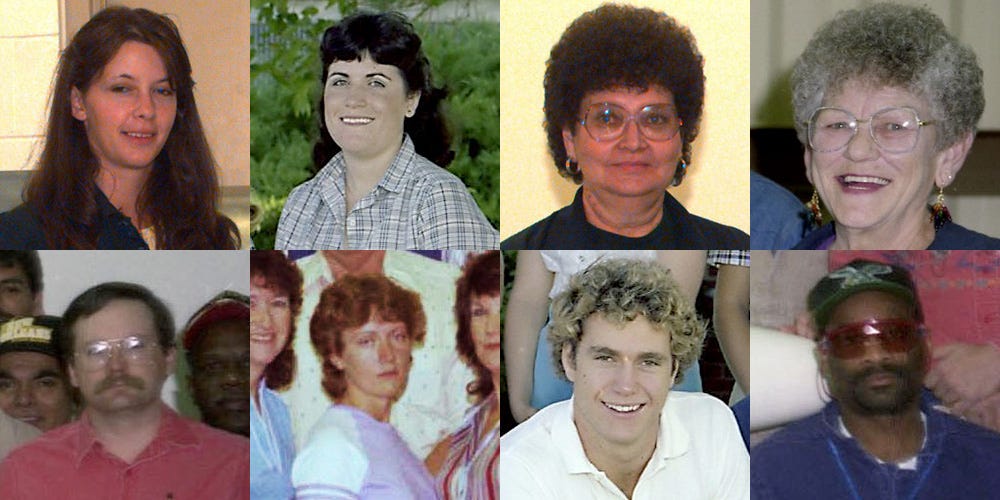
Seeing the “80’s Ladies” and the outward, bowling-league normality of their pictures makes me want to compare them to their slightly younger contemporaries just outside, moved by intense religious fervor or Baby Boomer-era ideal to gather in protest, throw blood on the walls, etc. Dan Zac’s “Almighty” gives a good treatment of that other side.
One could almost write a drama series comparing and contrasting both groups in that Cold War-era setting.
This was in my substack recommendations and I actually know a bit about this. The Dept. of Energy managed all the nuke weapons plants including mine in Largo, FL. I understood Pantex to be the final assembly location.
Our site was called GE Neutron Devices and we made neutron generators and RTG's or Radioisotopic thermoelectric generators. We also had Tritium and Plutonium at our site.
GE got out of the business in 1994 and we became employees of Martin Marietta and then Lockheed Martin in 1995-6. Our plant was built in 1957 and they closed it and moved production to Sandia labs in NM. Like these people (pictured) we had golf leagues and other events throughout the year. I was an Industrial Hygienist and t was great environment for that type work. DOE closed the site in 1997 and now it houses Raytheon and other smaller businesses. Our director was a physicist and there were all types of engineers and chemists. I would add that DOE is having me do physicals every three years as a follow up.